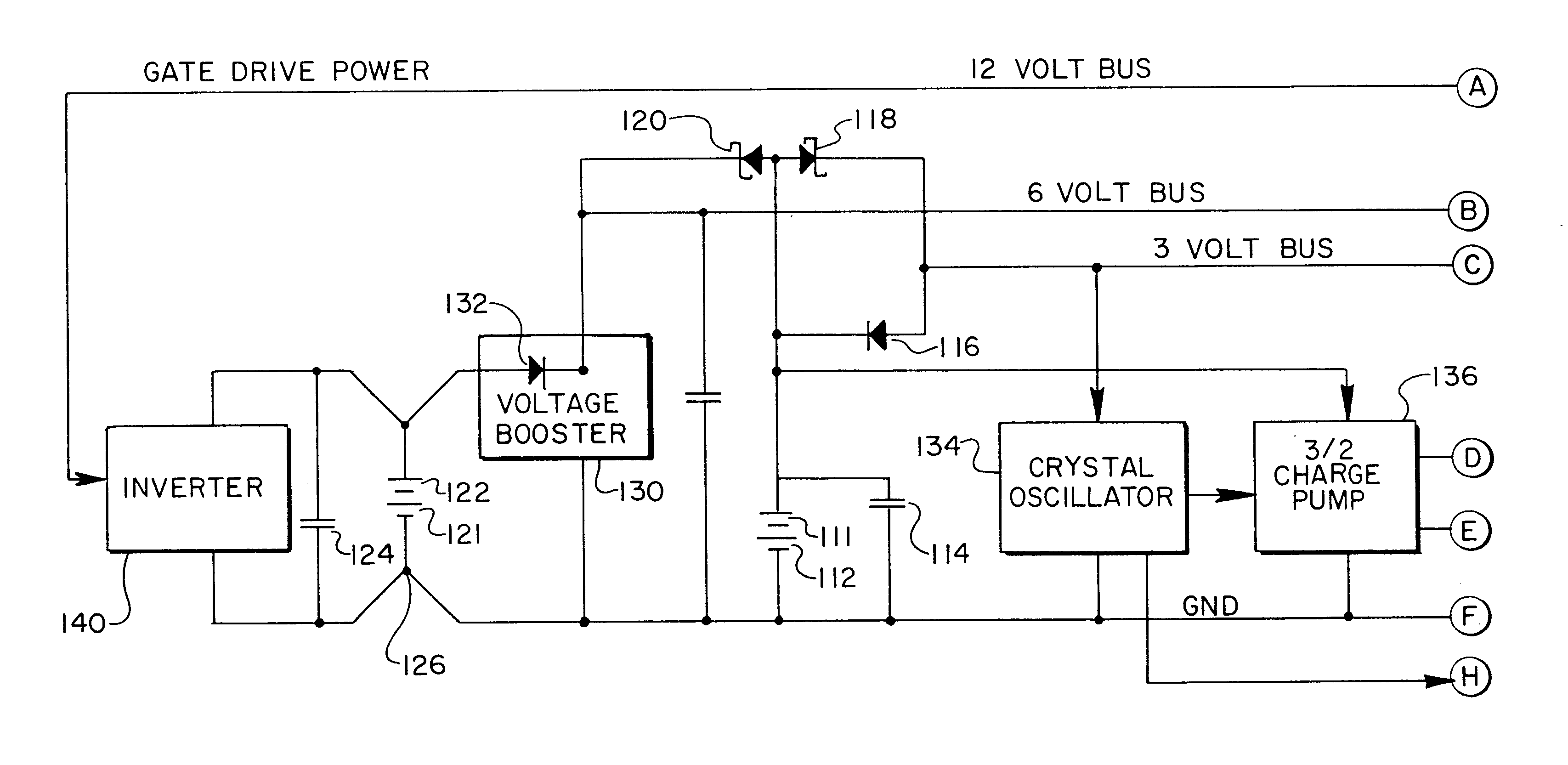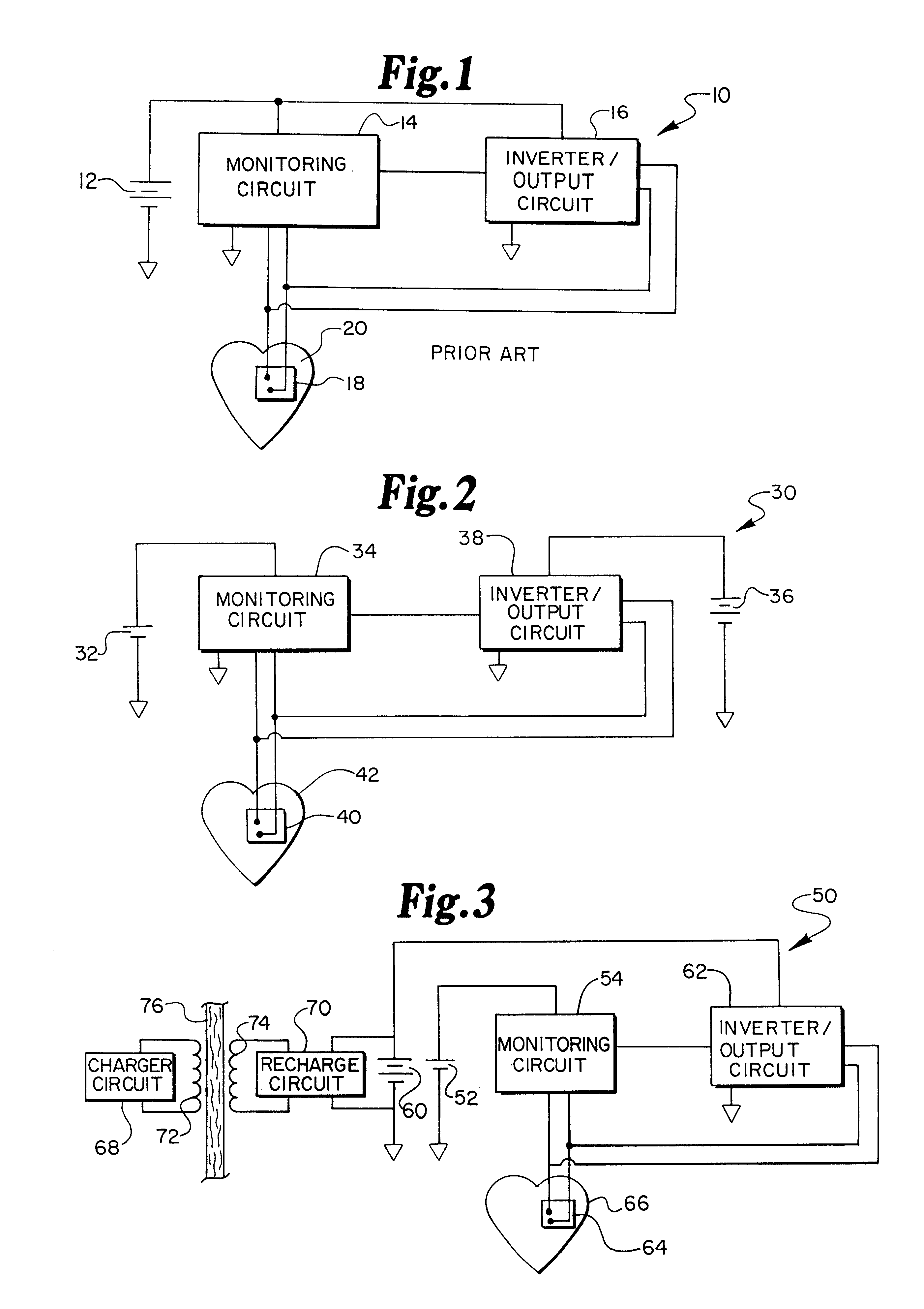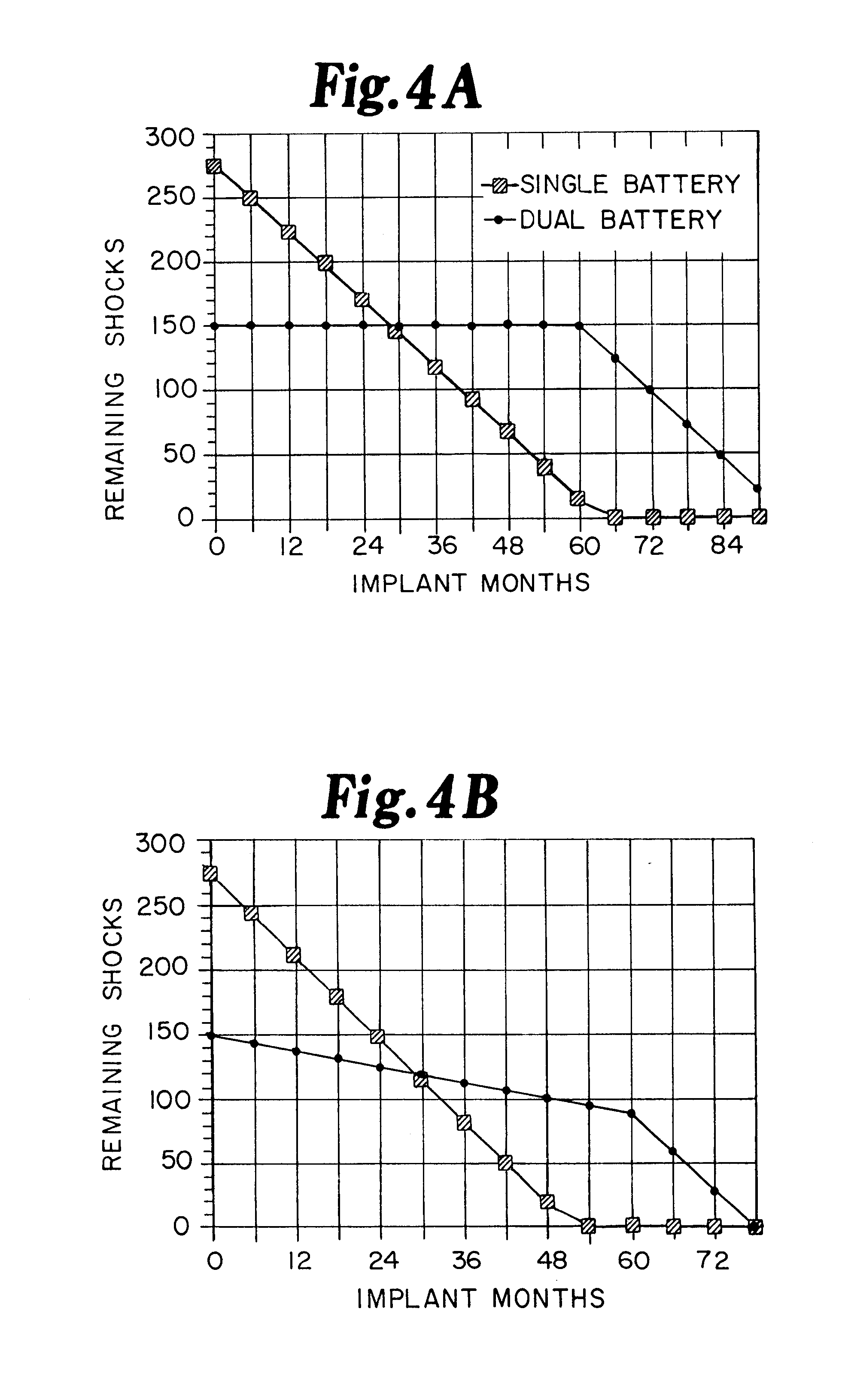Dual battery power system for an implantable cardioverter defibrillator with voltage booster
- Summary
- Abstract
- Description
- Claims
- Application Information
AI Technical Summary
Benefits of technology
Problems solved by technology
Method used
Image
Examples
Embodiment Construction
[0025]FIG. 1 illustrates a single battery system for an implantable defibrillator system 10 including a single battery 12, which provides power both to a monitoring circuit 14 and an inverter / output circuit 16 simultaneously. The monitoring circuit 14 and the inverter / output circuit 16 are interconnected to each other, and to two or more implanted electrodes 18 located on, near or in a heart 20. The implanted electrodes 18 include appropriate leads and sensors to monitor the electrical activity of the heart 20 and to deliver an appropriate electrical therapy to the heart 20 in the event that the monitoring circuit detects a cardiac arrhythmia. As discussed in the background of the invention, the electrical capacity of the single battery 12 may be excessive in relation to the circuit requirements of the monitoring circuit 14, and marginal or even somewhat lacking in electrical size in relation to the circuit requirements of the inverter / output circuit 16.
[0026]FIG. 2 illustrates a bl...
PUM
 Login to View More
Login to View More Abstract
Description
Claims
Application Information
 Login to View More
Login to View More - R&D
- Intellectual Property
- Life Sciences
- Materials
- Tech Scout
- Unparalleled Data Quality
- Higher Quality Content
- 60% Fewer Hallucinations
Browse by: Latest US Patents, China's latest patents, Technical Efficacy Thesaurus, Application Domain, Technology Topic, Popular Technical Reports.
© 2025 PatSnap. All rights reserved.Legal|Privacy policy|Modern Slavery Act Transparency Statement|Sitemap|About US| Contact US: help@patsnap.com



